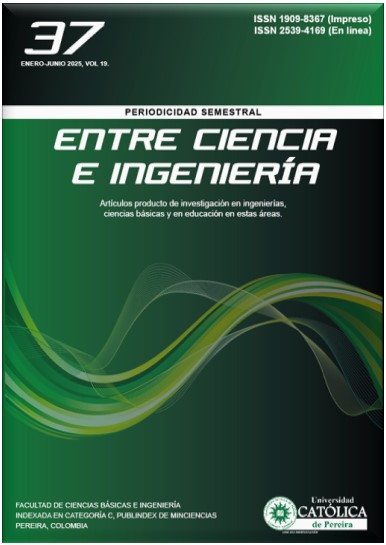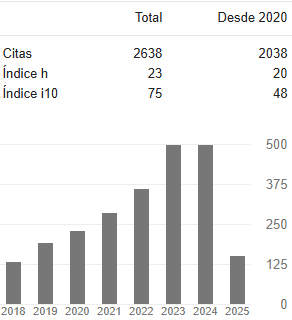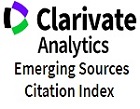Automatización Robótica de Procesos aplicado a los procesos de Compra: Un Caso de la Industria
DOI:
https://doi.org/10.31908/19098367.2970Palabras clave:
Robotic Process Automation, RPA, Procesos de compraResumen
La Automatización Robótica de Procesos o Robotic Process Automation (RPA) es usado para la automatización de diversos procesos donde se tienen tareas que son repetitivas y que su ejecución demanda una gran cantidad de tiempo. El objetivo del presente artículo es presentar una aplicación de RPA en el proceso de compras de una empresa industrial del rubro cerámico. Los robots, de la implementación de la RPA, se desarrollaron usando Power Automate y son ejecutados en un entorno virtualizado usando Microsoft Azure. Los resultados obtenidos de la ejecución de los robots muestran que los procesos automatizados mejoran su rapidez en un 98.7% y presentan cero errores. Este desempeño, ha permitido liberar a los trabajadores de tareas repetitivas y tediosas asignándoles otras tareas. En ese sentido, la RPA se presenta como una tecnología que brinda a las organizaciones la oportunidad de incrementar la eficiencia de sus procesos a través de la reducción de tiempo, costos y cero errores en la operación.
Descargas
Referencias
L. Ivančić, D. Suša Vugec, and V. Bosilj Vukšić, “Robotic Process Automation: Systematic Literature Review,” in Business Process Management: Blockchain and Central and Eastern Europe Forum, vol. 361, C. Di Ciccio, R. Gabryelczyk, L. García-Bañuelos, T. Hernaus, R. Hull, M. Indihar Štemberger, A. Kő, and M. Staples, Eds., in Lecture Notes in Business Information Processing, vol. 361. , Cham: Springer International Publishing, 2019, pp. 280–295. doi: 10.1007/978-3-030-30429-4_19.
F. Bensberg, G. Auth, and C. Czarnecki, “Finding the Perfect RPA Match. A Criteria-based Selection Method for RPA Solutions,” in Robotic Process Automation. Management, Technology, Applications, De Gruyter., C. Czarnecki and P. Fettke, Eds., Berlin, Boston: De Gruyter Oldenbourg, 2021, pp. 47–76. doi: https://doi.org/10.1515/9783110676693-003.
D. H. Timbadia, P. Jigishu Shah, S. Sudhanvan, and S. Agrawal, “Robotic Process Automation Through Advance Process Analysis Model,” in 2020 International Conference on Inventive Computation Technologies (ICICT), IEEE, Feb. 2020, pp. 953–959. doi: 10.1109/ICICT48043.2020.9112447.
R. Arnaz and M. E. Harahap, “Analysis of Implementation of Robotic Process Automation: A Case Study in PT X,” in Business Innovation and Engineering Conference (BIEC 2020) in Advances in Economics, Business and Management Research, vol. 184, 2021, pp. 61–64. doi: 10.2991/aebmr.k.210727.011.
A. Kumar, “RPA (Robotic Process Automation) – Case Study,” Int J Sci Eng Res, vol. 9, no. 12, pp. 1703–1706, Dec. 2018.
J. Kaitosalmi, M. Ratia, and P. Torkki, “From Manual to Automated: A Multi-case Study of Utilizing Robotic Process Automation and Intelligent Automation in Healthcare Operational Processes,” in Proceedings of the 58th Hawaii International Conference on System Sciences, 2025.
M. C. Lacity, L. P. Willcocks, and A. Craig, “Robotic Process Automation at Telefónica O2,” MIS Quarterly Executive, vol. 15, no. 1, pp. 21–35, 2016.
C. Kroll, A. Bujak, V. Darius, W. Enders, and M. Esser, “Robotic Process Automation - Robots Conquer Business Processes in Back Offices,” Capgemini, 2016.
C.-C. Osman, “Robotic Process Automation: Lessons Learned from Case Studies,” Informatica Economica, vol. 23, no. 4/2019, pp. 66–71, Dec. 2019, doi: 10.12948/issn14531305/23.4.2019.06.
D. K. White, “Robotic Process Automation for Intelligent Business Process Management,” International Journal of Innovative Computer Science and IT Research, vol. 1, pp. 42–52, 2025.
B. Axmann and H. Harmoko, “Robotic Process Automation: An Overview and Comparison to Other Technology in Industry 4.0,” in 2020 10th International Conference on Advanced Computer Information Technologies (ACIT), IEEE, Sep. 2020, pp. 559–562. doi: 10.1109/ACIT49673.2020.9208907.
L. Brzezinski, “Robotic Process Automation in Logistics – A Case Study of a Production Company,” EUROPEAN RESEARCH STUDIES JOURNAL, vol. XXV, no. Issue 2B, pp. 307–315, Aug. 2022, doi: 10.35808/ersj/2963.
D. Fernandez and A. Aman, “Impacts of Robotic Process Automation on Global Accounting Services,” Asian Journal of Accounting and Governance, vol. 9, pp. 123–132, Apr. 2018, doi: 10.17576/AJAG-2018-09-11.
C. Flechsig, F. Anslinger, and R. Lasch, “Robotic Process Automation in purchasing and supply management: A multiple case study on potentials, barriers, and implementation,” Journal of Purchasing and Supply Management, vol. 28, no. 1, p. 100718, Jan. 2022, doi: 10.1016/j.pursup.2021.100718.
A. Shamsuzzoha and S. Pelkonen, “A Robotic Process Automation Model for Order-handling Optimization in Supply Chain management,” Supply Chain Analytics, vol. 9, p. 100102, Mar. 2025, doi: 10.1016/j.sca.2025.100102.
N. Nalgozhina and R. Uskenbayeva, “Automating Hybrid Business Processes with RPA: Optimizing Warehouse Management,” in Procedia Computer Science, Elsevier B.V., 2024, pp. 391–396. doi: 10.1016/j.procs.2023.12.223.
S. A. Mohamed, M. A. Mahmoud, M. N. Mahdi, and S. A. Mostafa, “Improving Efficiency and Effectiveness of Robotic Process Automation in Human Resource Management,” Sustainability, vol. 14, no. 7, p. 3920, Mar. 2022, doi: 10.3390/su14073920.
D. Šimek and R. Šperka, “How Robot/human Orchestration Can Help in an HR Department: A Case Study From a Pilot Implementation,” Organizacija, vol. 52, no. 3, pp. 204–217, Aug. 2019, doi: 10.2478/orga-2019-0013.
M. Romao, J. Costa, and C. J. Costa, “Robotic Process Automation: A Case Study in the Banking Industry,” in 2019 14th Iberian Conference on Information Systems and Technologies (CISTI), Coimbra, Portugal: IEEE, Jun. 2019, pp. 1–6. doi: 10.23919/CISTI.2019.8760733.
Descargas
Publicado
Número
Sección
Licencia
Derechos de autor 2025 Entre Ciencia e Ingeniería

Esta obra está bajo una licencia internacional Creative Commons Atribución-NoComercial 4.0.



















